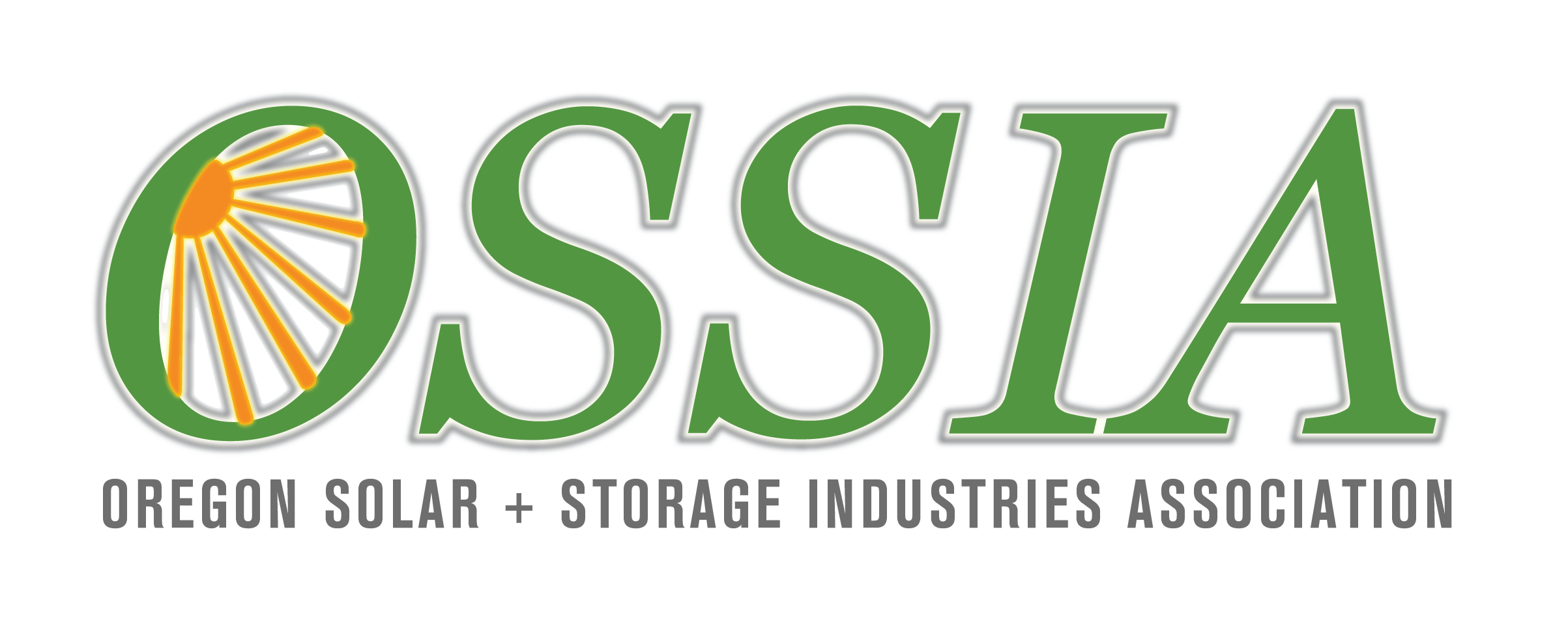OSEIA Criticizes Utility Regulators for Flawed Process
For Immediate Release -- OSEIA sharply criticized the process that led to today’s release of a draft report, comparing a state utility regulatory agency to “a student who procrastinated on a school assignment.”
The Oregon Solar Energy Industries Association’s (OSEIA) comments came on the heels of a draft report released today by the Oregon Public Utility Commission that suggested “potentially radical” changes in Oregon’s solar energy policy. The commission is developing the report in response to House Bill 2941 passed in the 2015 session of the Oregon legislature. The legislation directed the commission to evaluate a range of solar programs and submit its report by September 15, 2016.
“The commission had a total of 449 days to conduct a solid public process and produce a well-considered report that the legislature could use to craft policy,” explained Jeff Bissonnette, OSEIA’s executive director. “Instead we’ve gotten a first look at a report draft at Day 400 based on a nearly non-existent public process. The PUC prides itself on the level of public input it receives through its work. But in this case, the agency looks more like they waited until the last minute and are now trying to hurry and meet their deadline.”
Bissonnette pointed to a timeline that showed HB 2941 becoming law on June 25, 2015. However, the PUC did not open a docket to begin developing the required report until January 2016, nearly six months after the law was enacted and did not hold a workshop in the proceeding until May 2016. That was the last action until the release of the draft report today.
Bissonnette contrasted this process with another one called for in the same bill. “HB 2941 also required a report on community solar with a much tighter timeline,” he noted. “The PUC had just over four months to deliver a report to the legislature and in that time, they held two workshops and three rounds of public comment. You’d think that for a report with a broader range where they had more than a year, there would be a more comprehensive process. Instead, it seems they thought they had plenty of time until they didn’t.”
Regarding the content of the draft report, Bissonnette said that a close examination of its contents was in order. “I don’t want to fall into the same trap as the PUC seems to have and rush to conclusion,” he said. “A quick glance suggests policy changes that could bring about potentially radical shifts. But I want to take some time for the solar industry to examine if the little public input there has been has actually influenced the draft report.” Bissonnette
continued
said the solar industry would be working overtime to meet the quick turnaround time the PUC has set for comments.
“I want to be respectful of the PUC’s timeframe in this docket,” he said. “But now we’re all at the mercy of the commission’s rush to completion. I’m frankly concerned that whatever report is finally ramrodded through and submitted to the legislature won’t really be useful to legislators.”
###
The Oregon Solar Energy Industries Association (OSEIA) is a trade association founded in 1981 to promote clean, renewable solar technologies. With a membership of 75 businesses and organizations, we work with industry leaders, academic scholars, legislators, government, and non-profit agencies to advocate for solar technologies and raise awareness of its potential to help secure an affordable, reliable, and clean energy future.
--------------------------------------------------------------------------------------------------------------------------
Timeline from the Passage of HB 2941 and the Deadline for a Report on September 15, 2016
House Bill 2941 was passed by the Oregon legislature in 2015. One of the provisions of the bill was to instruct the Oregon Public Utility Commission (PUC) to develop and submit a report that “shall evaluate programs identified by the commission that develop and incentivize the use of solar photovoltaic energy systems….” The PUC was given a deadline of September 15, 2016 to submit the report. What follows is a timeline from when HB 2941 became law to the present.
June 25, 2015 – HB 2941 became law with a deadline of September 15, 2016 to submit the evaluation report
(a total of 449 days to have a process and turn in the report)
January 7, 2016 - Opened a docket – UM 1758
(197 days from when the bill became law – just under 44% of the available time to submit a report – 197/449)
February 4, 2016 – Staff workshop held
(28 days from opening and 224 days from when the bill became law - 224/449)
April 25, 2016 – PUC Staff distributed a letter announcing a workshop on May 9, 2016
(110 days after opening and 306 days from when HB 2941 became law or 68% of the available time – 306/449)
May 5, 2016 – Distributed a finalized schedule for the May 9, 2016 workshop
May 9, 2016 – Held a workshop of interested parties to hear comments on how the report should be framed and what should be included in the report.
(the second substantive action in the docket and the very first public interaction in the docket 124 days after opening and 320 days from when HB 2941 became law or 71% of the available time – 320/449)
July 28, 2016 – Release an initial draft report for public comment
(third substantive action in the docket 204 days after opening and 400 days from when HB 2941 became law or 89% of the available time – 400/449)
August 11, 2016 – Requested date for comments on initial draft letter
(the second time for public comment in the docket 218 days after opening and 414 days from when HB 2941 became law or 92% of the available time – 414/449)
